Startling Fact: Did you know your body isn’t just storing excess calories when you gain weight?

Certain types of human body fat cells, including brown fat and beige fat, can actually help burn calories, not just store them! Recent scientific breakthroughs reveal that body fat isn’t simply “bad”—it’s a complex network of specialized cells that influence your health, metabolism, and even energy levels. This article uncovers the science behind fat cells and shows you how to use this hidden power for better health.
Unveiling the Science Behind Types of Human Body Fat Cells
If you’ve ever struggled to lose weight or wondered why some people seem to stay warm all winter, you may be surprised to learn it’s not just about willpower or diet but also about the different types of fat cells in your body. The types of human body fat cells within your body play a big role in shaping your metabolism, energy balance, and even your risk for disease.
Far from being simple “cushions,” these fat cells have remarkable abilities—like generating heat or producing hormones that regulate your hunger. This article will walk you through the science behind these cells, highlighting recent discoveries and practical ways to improve your health by understanding your own adipose tissue.

A Startling Fact: The Overlooked Complexity of Body Fat
"Did you know that some types of human body fat cells can actually help you burn calories instead of storing them? This often-overlooked detail could change how we think about body fat and weight management." – Leading Endocrinologist
What You'll Learn About Types of Human Body Fat Cells
The main types of human body fat cells and their unique properties
Functions and health impacts of different fat cells
How adipose tissue supports the body’s metabolism and energy storage
Scientific advances in understanding fat cell behavior
Practical steps for optimizing your body fat composition

Understanding Types of Human Body Fat Cells: Basic Overview
Body fat is far more diverse and dynamic than most people imagine. At the heart of this complexity are different fat cells, or adipocytes, which are the building blocks of adipose tissue in your body. These cells store energy, help insulate the body, and play a critical role in hormone production and immune system regulation.
There are three main types of fat cells in the human body: white fat cells, brown fat cells, and beige fat cells. Each type of fat cell has its own structure, function, and impact on your health. Understanding these distinctions is crucial for anyone interested in weight loss, disease prevention, or simply healthy living.
As you explore the unique roles of white, brown, and beige fat cells, it’s worth noting that certain foods can actively support your body’s ability to burn fat, particularly in stubborn areas like the belly. For practical strategies and a science-backed list of foods that may help accelerate fat loss, check out these essential foods that help you burn belly fat fast.
As science digs deeper, it's become clear that not all types of fat cells are equal in their function and impact on adipose tissue. Some fat cells—like those in brown adipose tissue—actively burn calories and generate heat through a process called thermogenesis. Others, like most of the white fat cells found in subcutaneous and visceral regions, are primarily devoted to energy storage and hormone release. Researchers are now exploring how these cell types develop, interact, and potentially convert from one form to another—a factor that could revolutionize future weight management strategies and metabolic treatments.
What Are Fat Cells? Foundations of Adipose Tissue
To truly appreciate the diversity among fat cells, we need to start at the beginning. All human fat cells—or adipocytes—are specialized units within adipose tissue that develop from precursor stem cells. Their primary function is to store energy in the form of lipid droplets, which can later be converted back to energy or used to supply fatty acids to other tissues as needed.
Adipose tissue isn't just about storage—it's a dynamic organ, influencing everything from body temperature (thermogenesis) to hormone regulation (like leptin and adiponectin). Each cell type, from energy-conserving white fat to calorie-burning brown fat, plays a strategic role in your overall wellbeing and healthy weight balance.
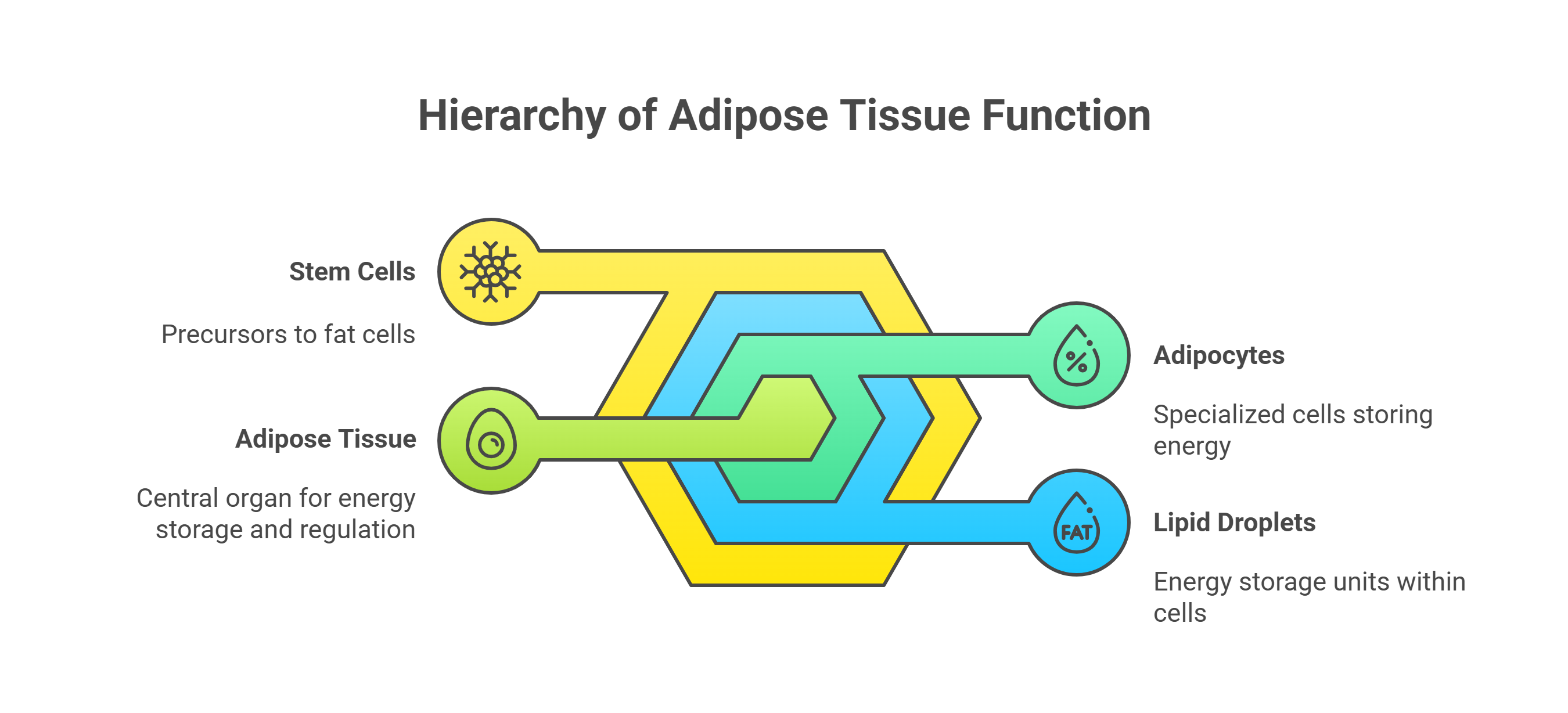
Types of Fat: How Do Different Fat Cells Form?
The journey from stem cell to mature fat cell involves a complex process known as differentiation. White fat cells develop primarily to store excess calories and release energy when the body needs it. Brown fat cells, meanwhile, are loaded with mitochondria—cellular “power plants”—that burn calories to generate heat, a trait believed to have evolved for survival in cold climates.
A third type, beige fat cells, are essentially hybrids: they can form in white fat tissue but adopt heat-generating properties under certain conditions, like cold exposure or physical activity. This dynamic interplay between cell types means that your body’s fat composition isn’t static—it's responsive to your lifestyle, environment, and genetics.
Studies are now revealing that different types of fat cells are distributed in unique locations throughout your body, each serving specialized roles. The ability to convert or “activate” one cell type over another is at the cutting edge of adipose tissue research, offering hope that we might one day harness these cells to combat obesity and metabolic disease more effectively.
Type of Fat Cell |
Primary Function |
Location |
Health Impact |
|---|---|---|---|
White Fat Cells |
Energy Storage |
Abdomen, thighs, arms |
Metabolic risk if excessive |
Brown Fat Cells |
Heat Generation |
Neck, upper back |
Positive metabolic effects |
Beige Fat Cells |
Calorie Burning |
Scattered in white fat |
Potential for weight management |
White Fat Cells: The Most Common Type of Human Body Fat Cell
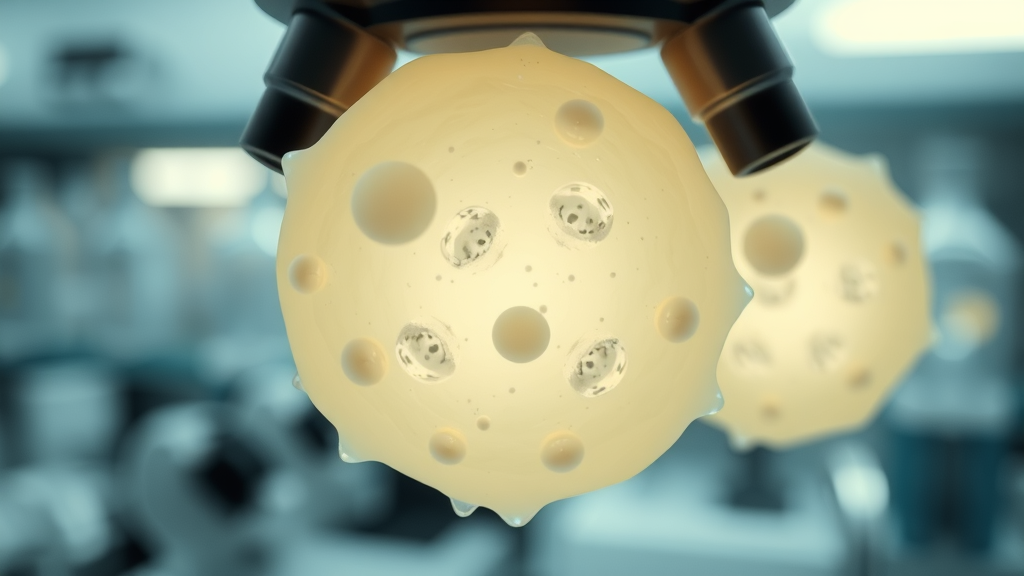
Role of White Fat in Adipose Tissue
White fat cells make up the majority of the body’s fat stores, forming what’s known as white adipose tissue, a key component of overall body fat. These cells are exceptionally adept at energy storage—they accumulate fatty acids in the form of large lipid droplets and release energy when the body requires it for movement, growth, or survival during fasting. In addition to acting as an energy reserve, white fat cells are crucial for hormone production, releasing substances that regulate appetite, metabolism, blood sugar, and reproductive health. This makes white adipose tissue an active part of your body’s endocrine system—not just a passive energy bank.
Another critical feature of white fat is its distribution. Significant amounts are found as subcutaneous fat (just below the skin) and visceral fat (surrounding internal organs). Each has a very different effect on health: subcutaneous fat is less risky, while visceral fat (mainly white fat) increases the risk of metabolic syndromes, heart disease, and type 2 diabetes. Because of these differences, understanding the types of human body fat cells and their locations can help you make more informed lifestyle and health choices.
Health Implications of Excess White Fat
When white fat cells become overly abundant—especially in the visceral area—they pose significant health challenges. Excess white adipose tissue is often at the center of obesity and related conditions, such as insulin resistance, inflammation, and cardiovascular issues. These risks arise because white fat can release high levels of fatty acids and pro-inflammatory cytokines into the bloodstream, affecting how organs handle glucose and respond to insulin. Moreover, the storage capacity of white fat cells isn’t limitless; when overwhelmed, they may spill lipids into nearby tissues, worsening metabolic health.
Energy storage: Safely holds fuel for future use, but overaccumulation leads to metabolic strain.
Hormone production: Releases hormones and cytokines that affect appetite, metabolism, and inflammation.
Association with visceral and subcutaneous fat: Distribution affects risk—visceral fat is linked to higher disease chances.
Brown Fat Cells: Harnessing the Power of Thermogenesis
Brown Fat Cells: Where Are They Found and Why Are They Special?
Brown fat cells, found mainly in the neck, upper back, and around the shoulders, are unique because of their exceptional ability to generate heat through thermogenesis, making brown fat a powerful fat cell type for metabolism. Unlike white fat, brown fat cells contain numerous mitochondria rich in iron, giving them their distinctive color.
These mitochondria allow brown fat to burn calories efficiently, converting stored energy directly into heat. This process is especially important for infants and hibernating animals but also plays a role in adult metabolism under certain conditions, such as cold exposure.
The metabolic power of brown adipose tissue (BAT) means that even small amounts can have outsized effects on energy expenditure and weight regulation. Modern research is uncovering ways to stimulate or increase brown fat in adults, aiming to harness this natural calorie-burning process to combat obesity and metabolic disease.
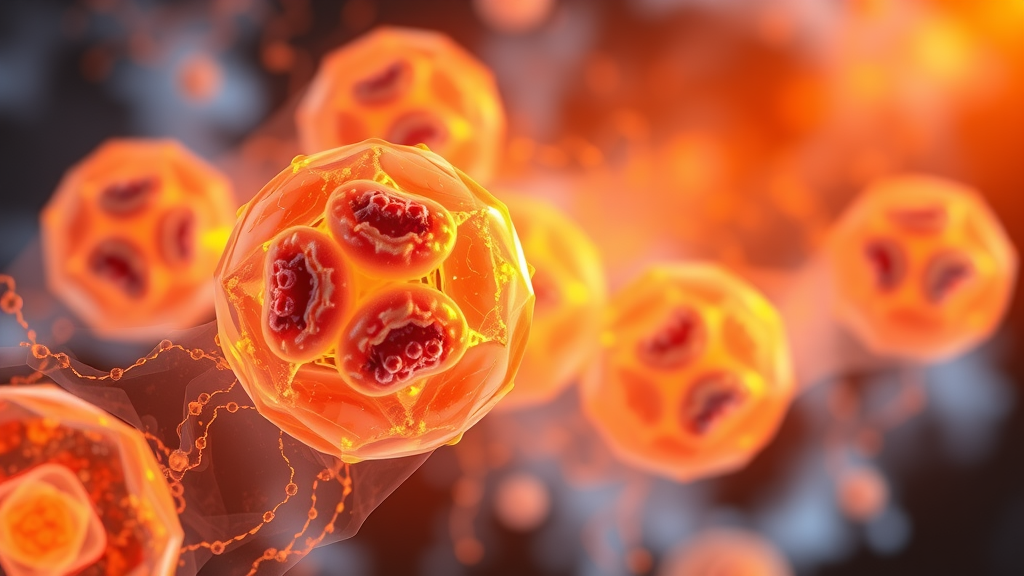
How Brown Fat Helps You Burn Calories
Brown fat cells are your body’s personal heat engines. By burning stored fat and glucose, brown adipose tissue helps maintain core temperature in cold environments—a process also called non-shivering thermogenesis. Because brown fat cells convert calories directly into heat, individuals with more active brown fat are less likely to develop obesity, and may burn more energy at rest. This has inspired research into harnessing and activating brown fat for effective, sustainable weight loss strategies.
Heat production: Generates heat to keep you warm, especially in cold environments.
Metabolic activity: Increases calorie burn, potentially supporting weight loss and healthy body fat balance.
Potential role in obesity prevention: More brown fat activity may help reduce the risk of obesity and related illnesses.
Beige Fat: The Bridge Between White and Brown Fat Cells
What Triggers Beige Fat Cell Formation?
Beige fat cells are a fascinating discovery in modern adipose tissue research, representing a hybrid fat cell type that can burn calories like brown fat. Unlike brown fat, beige fat isn’t present at birth but can develop within white adipose tissue under certain conditions—like chronic cold exposure, certain foods, or physical activity. This process, known as “browning,” transforms ordinary white fat cells into calorie-burning beige cells capable of thermogenesis. Scientists believe this could offer a new approach for increasing metabolic rate and supporting weight loss without relying solely on exercise or dieting.
The formation of beige fat is influenced by genetic, hormonal, and environmental factors. Higher levels of beige fat activity are associated with improved insulin sensitivity and cardiovascular health. As such, researchers are exploring how lifestyle factors and even medications might induce this transformation, opening new doors for treating obesity and metabolic syndrome by harnessing the power of these unique fat cells.
Potential Impacts of Beige Fat on Metabolism
Although beige fat cells are less common than white or brown fat, their ability to increase energy expenditure makes them a target for researchers and anyone interested in healthy body composition. Activation of beige fat enhances calorie burning and promotes a healthier balance between energy intake and expenditure, potentially making weight management more efficient. Unlike brown fat, which is limited in most adults, beige fat can be induced, suggesting its critical role in future therapies for overweight and obesity.

Visceral Fat vs. Subcutaneous Fat: The Deep Divide in Types of Human Body Fat Cells
Location and Health Effects of Visceral Fat
Visceral fat, composed mostly of white fat cells, is found deep within the abdomen surrounding critical organs like the liver, pancreas, and intestines. Composed mostly of white fat cells, it’s more than just extra padding—it’s metabolically active and releases substances that can interfere with hormonal balance and promote inflammation. High levels of visceral fat are tightly linked to increased risk of heart disease, type 2 diabetes, and other metabolic disorders, making it one of the most dangerous forms of body fat.
Diet, lack of exercise, chronic stress, and genetics all influence visceral fat accumulation. Unlike subcutaneous fat (the type you can pinch), visceral fat is hidden, making it harder to detect without medical imaging. However, its health impacts are profound, with excess visceral fat contributing to insulin resistance, abnormal cholesterol levels, and systemic inflammation—all classic risk factors for chronic disease.
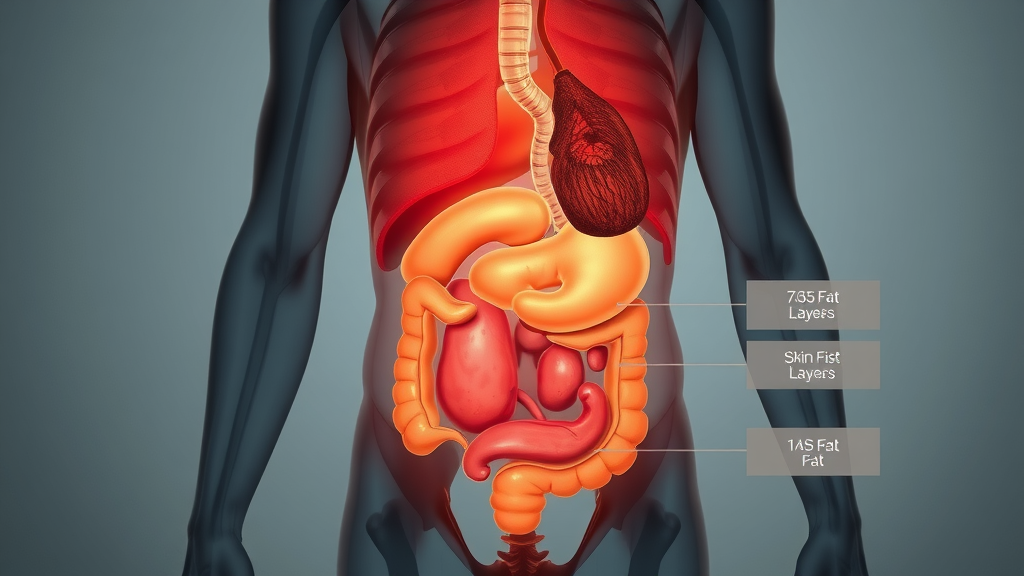
Living with Subcutaneous Fat: Friend or Foe?
Subcutaneous fat lies just beneath the skin and is the most visible form of body fat. While often viewed as a cosmetic concern, subcutaneous fat is generally less harmful than visceral fat and may even have protective effects against certain diseases. It acts as a cushion and insulator, helping to regulate body temperature and support immune system activity. In healthy amounts, subcutaneous fat supports normal hormone function and serves as a valuable energy reserve.
Problems arise only when subcutaneous fat accumulates in large amounts or is accompanied by increased visceral fat, tipping the body's overall adipose tissue balance into unhealthy territory. Effective weight management strategies target both visceral fat and excessive subcutaneous fat, improving both metabolic health and appearance.
Type |
Location |
Disease Risk |
|---|---|---|
Visceral Fat |
Around organs |
Linked to metabolic disorders |
Subcutaneous Fat |
Beneath skin |
Less harmful, often protective |
Other Types of Fat Cells in the Human Body
Bone Marrow Fat: Function and Importance
Not all adipose tissue is found under the skin or around organs. Bone marrow fat is a unique type of fat cell residing within the cavities of your bones. These fat cells provide energy for the bone marrow’s essential functions—like the production of new blood cells—and play a role in bone health and immune system function. Increasing evidence suggests that changes in bone marrow fat content can affect bone strength and may be linked to conditions like osteoporosis, especially in aging populations.
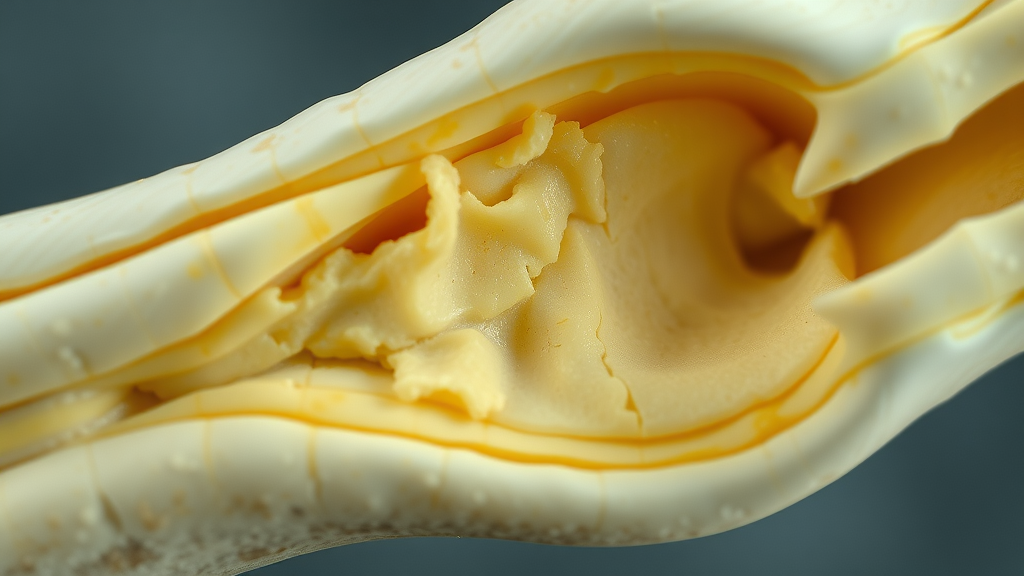
Essential Fat: The Fat You Need to Survive
Essential fat is the minimum amount of body fat necessary to support life and normal physiological function. It’s found in the bone marrow, nerves, brain, and membranes surrounding organs, contributing to hormone production, vitamin absorption, and protection of internal structures.
Both men and women require a certain level of essential fat—dropping below this threshold can compromise immune, reproductive, and metabolic health. Essential fat should not be confused with excess storage fat, as it is necessary for survival and cannot be lost through diet or exercise without risking significant health consequences.
Factors Influencing the Distribution of Types of Human Body Fat Cells
Genetics, Lifestyle, and Hormonal Regulation
The amount and distribution of different types of human body fat cells within adipose tissue are influenced by a blend of genetics, lifestyle choices, and hormonal signals. Some people are genetically predisposed to store more visceral fat, while others accumulate more subcutaneous fat. Lifestyle habits—like diet, physical activity, and sleep—further shape your body fat profile. Hormones (such as cortisol, insulin, and estrogen) regulate where fat is deposited and how efficiently it’s burned or stored. This means everyone’s unique “fat map” is determined by both their biological inheritance and daily routines.
Recent studies also highlight the importance of early life programming—experiences in infancy and puberty can set the stage for adipose tissue distribution later in life. Epigenetic changes (modifications to how genes are expressed) may result from diet, exercise, or even chronic stress, shifting how your body manages different cell types and influencing long-term health risks. By modifying lifestyle factors and maintaining hormonal balance, you can influence how these fat cell types behave and impact overall well-being.

Aging and Fat Cell Changes
As we age, the number and function of fat cells in our body change. Older adults often experience a shift from subcutaneous to visceral fat deposits, increasing their risk for metabolic syndrome. Aging also impacts fat cell turnover; the ability to produce new brown and beige fat cells generally declines, reducing metabolic rate and increasing the relative risk of obesity and associated conditions.
Additionally, changes in hormone levels during aging—like decreased estrogen or testosterone—can promote fat gain, especially around the abdomen. Understanding these natural shifts can empower individuals to adjust lifestyle habits and seek medical advice as needed to support healthy adipose tissue composition at any age.
How to Identify Your Types of Human Body Fat Cells
Medical Imaging and Body Composition Analysis
Advances in medical imaging now allow detailed measurement of body fat and its various types. Techniques like MRI, CT scans, and DEXA scans can distinguish visceral from subcutaneous fat, map fat distribution, and estimate overall body composition.
These modalities are invaluable for diagnosing health risks tied to excess visceral fat or for monitoring the effects of lifestyle interventions. For everyday purposes, simpler tools like skinfold calipers or body circumference measurements offer an estimate of subcutaneous fat, helping track progress in fat loss or body recomposition efforts.

Signs You May Have More Visceral Versus Subcutaneous Fat
While precise measurement of visceral fat requires imaging, there are common signs that can help you estimate your risk. A larger waist circumference (over 40 inches for men or 35 inches for women) often indicates higher amounts of visceral fat. People with an “apple” body shape (more weight around the midsection) are at greater risk than those with a “pear” shape (weight around the hips and thighs), who carry more subcutaneous fat. Other indicators include high triglyceride levels, insulin resistance, and metabolic syndrome symptoms. Recognizing the difference can help you set more realistic health goals and know when to seek professional assessment.
Activating Brown Fat Cells to Support Weight Loss
Practical Strategies to Stimulate Brown and Beige Fat Activity
Unlocking the calorie-burning potential of brown fat cells and beige fat cells could support more efficient weight loss and improve overall body fat composition for better metabolic health. Here are science-backed strategies to activate these beneficial fat cells:
Exposure to cold temperatures: Regular exposure to cool environments (such as cold showers or outdoor exercise in brisk weather) prompts your body to produce more heat and may stimulate the transformation of white fat cells into beige.
Physical activity: Exercise increases the production of certain hormones (“irisin” and “FGF21”) that trigger the browning of adipose tissue, increasing overall energy expenditure.
Dietary influences: Certain foods and supplements—like capsaicin (from spicy peppers) or resveratrol (found in grapes)—may support brown fat activity, though more research is needed for definitive recommendations.

Types of Human Body Fat Cells and Their Importance in Health
Current Research and Insights on Adipose Tissue
Modern research has completely redefined our understanding of adipose tissue and the various roles of fat cells. No longer seen as mere energy storage, fat is now recognized for its part in hormone production, immune responses, and metabolic regulation.
Current studies are uncovering the genetic switches and environmental cues that dictate whether fat cells become energy-storing white fat or calorie-burning brown and beige fat. Excitingly, these discoveries are leading to new strategies for managing obesity, metabolic syndrome, and even some forms of cancer by targeting the behavior and distribution of different fat cell types.
"Understanding the diversity among fat cells not only helps in weight management but also opens new doors for combating metabolic diseases." – Dr. Sarah Jenkins, Metabolic Researcher
Key Takeaways: Mastering the Knowledge of Types of Human Body Fat Cells
White, brown, and beige fat cells each have unique roles in health and metabolism.
Adipose tissue is far more complex than just “body fat”—it’s a dynamic organ.
Balancing different types of body fat can support better health outcomes.

Types of Human Body Fat Cells
What are the different types of fat cells?
Answer: There are primarily three types of human body fat cells—white fat cells, brown fat cells, and beige fat cells. Each plays a different role in energy storage, heat generation, and metabolic regulation.
Is visceral fat brown or white?
Answer: Visceral fat is predominantly made up of white fat cells, which are linked to an increased risk of metabolic diseases.
How do I know if I have visceral fat or subcutaneous fat?
Answer: Visceral fat is located deep within the abdomen, surrounding internal organs, and is usually measured through imaging techniques like MRI or CT scans, while subcutaneous fat lies just under the skin and can be measured with calipers or body composition tools.
How to activate brown fat cells to lose weight?
Answer: Brown fat cell activation can be supported by exposure to cool temperatures, regular physical activity, and possibly by certain dietary components. Consult with a healthcare provider before making significant changes to your routine.
Frequently Asked Questions About Types of Human Body Fat Cells
Are beige fat cells the same as brown fat cells?
Can you increase the number of brown fat cells naturally?
Is all body fat considered unhealthy?
Conclusion: Rethinking the Types of Human Body Fat Cells for Better Health
"By understanding and embracing the diversity of fat cells, we empower ourselves to make smarter health choices and drive future advances in metabolic research."
If you’re inspired to take your health journey further, consider how your overall nutrition and macronutrient balance can influence not just your fat cell composition, but your entire metabolic profile. Protein, for example, plays a vital role in supporting muscle mass, satiety, and even the regulation of fat storage and burning.
To deepen your understanding of how protein can complement your efforts to optimize body fat and metabolism, explore these essential protein facts and benefits for your health. By integrating this knowledge, you’ll be better equipped to make informed choices that support lasting wellness and metabolic vitality.
Sources
Understanding the various types of human body fat cells is essential for comprehending their distinct roles in health and metabolism. The primary types include white, brown, and beige fat cells, each with unique functions and characteristics.
White Fat Cells: These are the most abundant fat cells in the body, primarily responsible for storing energy and producing hormones like leptin and adiponectin. They are predominantly located in areas such as the chest, belly, and legs. Excessive accumulation of white fat, especially in the abdominal region, is associated with increased risks of metabolic disorders. (webmd.com)
Brown Fat Cells: Found mainly in the neck, upper chest, shoulders, and stomach, brown fat cells are unique due to their ability to burn energy and produce heat, a process known as thermogenesis. Individuals with higher amounts of brown fat tend to have improved metabolism and a reduced risk of diseases like type 2 diabetes and high blood pressure. (webmd.com)
Beige Fat Cells: These cells form within white adipose tissue under certain conditions, such as cold exposure or physical activity, and can burn energy to produce heat, similar to brown fat. The process of white fat transforming into beige fat is known as “browning” and is a focus of research for potential obesity treatments. (webmd.com)
Additionally, Bone Marrow Adipose Tissue (BMAT) is a unique type of fat found within the bone marrow. BMAT has qualities of both white and brown fat but is distinct in its function and molecular characteristics. It plays a role in bone health and hematopoiesis, the process of forming blood cellular components. (en.wikipedia.org)
Understanding these different fat cell types and their functions can provide insights into managing body weight, metabolic health, and developing targeted therapies for obesity and related conditions.
 Add Row
Add Row  Add
Add 




Write A Comment